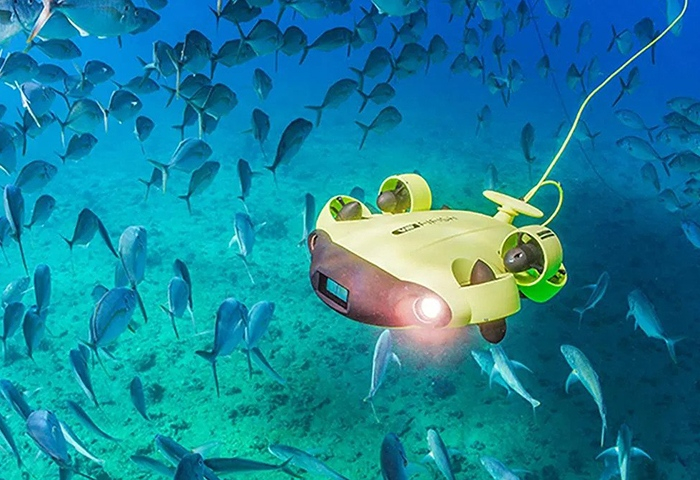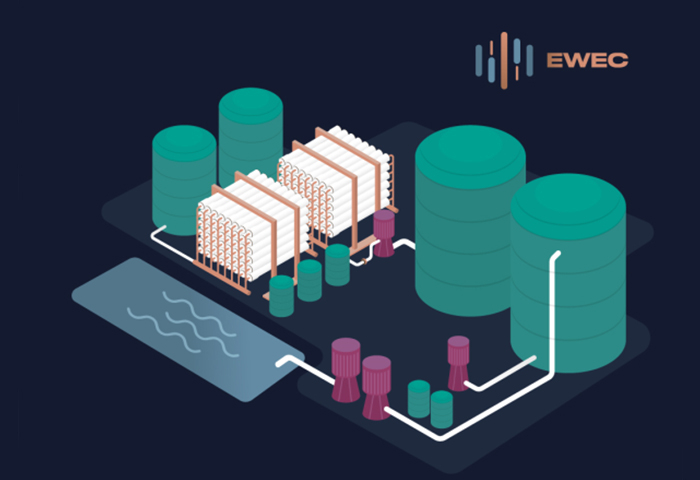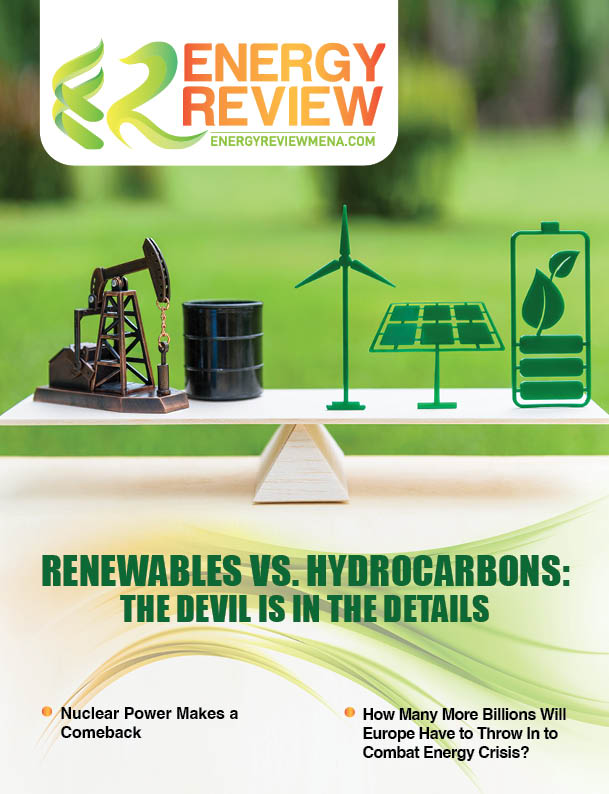Developments in drone technology are not showing any signs of slowing down. The integration of drones with artificial intelligence (AI), along with the development of thermal imaging and methane gas detection have together been powerful factors leading to the adoption of the drone as the utility of choice by the oil and gas operators. With this development, the ubiquity of drone coverage has expanded beyond its remaining within visible sites, as the drone can now fly beyond-the-visual-line-of-sight (BVLS). And if that weren’t enough, drones can now dive as well.
In a wave tank at a laboratory in Edinburgh, engineers watch in concentration as an underwater drone rises to the surface. Soon, the device will be able to go offshore to maintain wind farms, a small revolution for a booming sector.
For this team of scientists, who developed the "remotely operated underwater vehicle" (ROV) at the Scottish Heriot-Watt University, the device will revolutionize the industry. It will be able to carry out inspection and maintenance operations on offshore wind farms, tasks that until now have been costly and risky, requiring divers and the potential for human error.
The British government has very ambitious plans to develop wind power and thus reduce CO2 emissions. The potential of this type of energy seems to be further enhanced by the surge in hydrocarbon prices due to the Russian invasion of Ukraine.
"We have to imagine that in 10, 15 years, there will be hundreds of offshore wind farms, which means thousands of turbines along the British coast," states Yvan Petillot, Professor of Robotics at Heriot-Watt University. "There is also hydrogen being developed", often produced offshore.
"What we're developing are remote technologies," with which "people can inspect and maintain these farms from the shore, without putting anyone at risk," he adds.
In May, a sensor-equipped drone conducted what is believed to be the first autonomous inspection of an offshore wind farm.
The device was deployed as part of a trial at the EDF Blyth wind farm in Northeast England, and what it filmed allowed scientists to study the condition of the turbine foundations and submerged cables.
In addition, the drone modeled a 3D reconstruction of the submerged part of the park, listing the accumulation of micro-organisms, plants and algae on the turbines.
"Safer and faster"
If a problem is detected, the ROV can be deployed to make repairs.
"The system will first do an autonomous inspection of the seafloor and its structure, and build a 3D model that someone from land can study (to) say there's a problem here," Petillot says.
"Typically, if you have corrosion, you may need to turn a valve, connect a cable, change an anode or clean the surface," the professor lists.
Maxime Duchet, an engineer at EDF, said in a statement after the sea trial that the images and models collected by the drone would greatly improve the conduct of maintenance operations on the site.
While more testing is needed, including estimating how long it takes to inspect the entire fleet, "it's clear from these initial results that this technology can provide safer, faster operations and reduce the carbon footprint" of fleet maintenance, he noted.
Engineers, who fly the drone with a joystick, say the device can act autonomously most of the time. If it gets stuck or focuses too much on one aspect of the environment it's studying, a scientist can step in and redirect it.
For Petillot, the use of a drone could allow more scientists to work on remote maintenance of the parks when they would not necessarily have been prepared to work at sea.
Maintenance at sea is extremely difficult and risky. It is complicated to find qualified divers or pilots. On the other hand, says Petillot, it's easier to find someone to control a system as if they were playing a video game.
Concrete benefits
Thanks to their compact size and 360° omnidirectional maneuverability, underwater drones are a safe and efficient way for maritime and subsea industries, agencies and organizations to remotely evaluate and monitor their assets and conduct inspections while reducing both operational costs and human risks. Below are some examples of underwater ROVs’ real-world applications:
- Aquaculture
Fisheries and other aquacultural enterprises can utilize underwater ROVs to remotely assess their fish farming operations. Traditionally, fish farmers would have to do so manually by making the dives themselves.
- Shipping
Underwater drones enable shipping companies and shipyards to perform routine ship evaluations remotely and efficiently. They can also perform detailed hull inspections, shipyard activity monitoring and damage assessments.
- Offshore Energy
Underwater ROVs are a safe and cost-effective way for offshore energy companies to remotely carry out detailed industrial inspections. They can perform maintenance at offshore platforms without having to put engineers in harm’s way.
- Utilities
Utility providers such as power and telecommunications companies can deploy underwater drones to remotely assess and monitor subsea or submerged structures. Underwater drones can also track underwater pipelines, power cables and fiber optic data cables.
- Public Works
Underwater drones are ideal for agencies and organizations that maintain various water-related public works. They routinely carry out detailed structural and safety inspections of waterways and ports. They can also monitor submerged structures like bridge piers and abutments, dams and other subsea platforms.
- Search and Rescue/Recovery
Thanks to their ability to house a variety of add-ons (such as buoyant robotic arms and other search and recovery tools), underwater ROVs are perfectly suited for a range of underwater search and rescue, as well as salvage and recovery operations. Their ability to retrieve and carry much heavier payloads than human divers is an obvious advantage. In situations that require the deployment of human divers, underwater drones can identify potential dangers to the environment before sending in human assets.
- Defense and Security
Since underwater ROVs can be operated remotely from a distance, they can scout, locate, identify and eliminate dangerous underwater threats that may be present within naval theaters of operations without the need to place human assets in jeopardy.
- Academia
Since they are much more affordable than cost-prohibitive submarines, underwater ROVs greatly lower the barrier to entry for educators and students studying marine biology, naval engineering and other maritime fields. Underwater drones allow educators to safely and efficiently conduct detailed subaquatic explorations to uncover the mysteries of the vast oceans.
- Marine Conservation and Preservation
Thanks to their much smaller footprint and relatively quiet operation, underwater ROVs are also important tools for organizations working in marine conservation and ecological preservation. They facilitate the non-disruptive monitoring of these marine environments that are home to hundreds of thousands of aquatic species, as well as the diverse habitats that support them.









